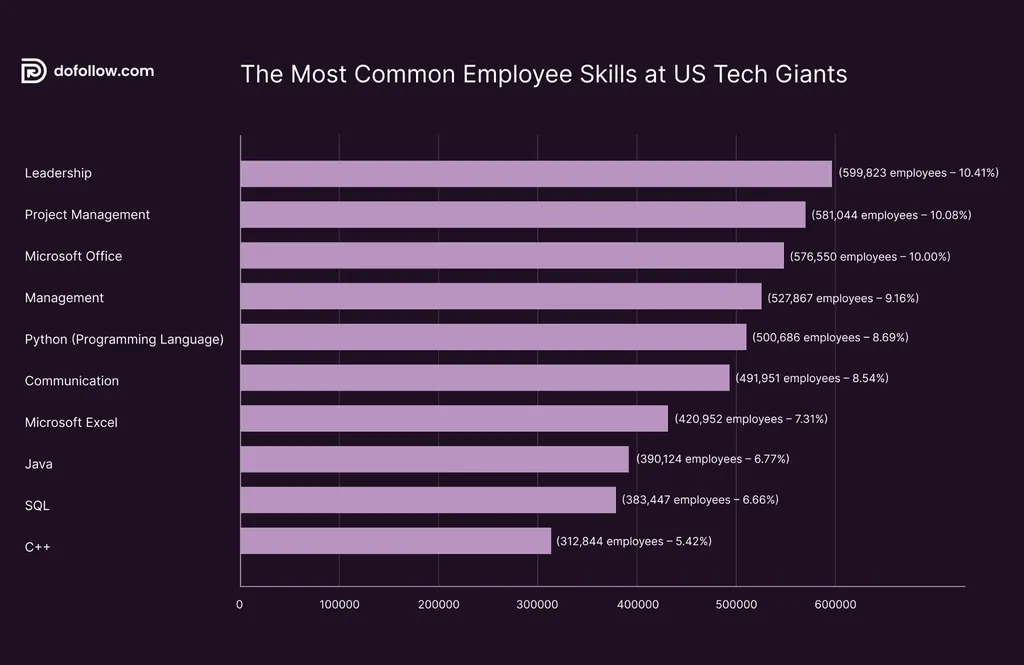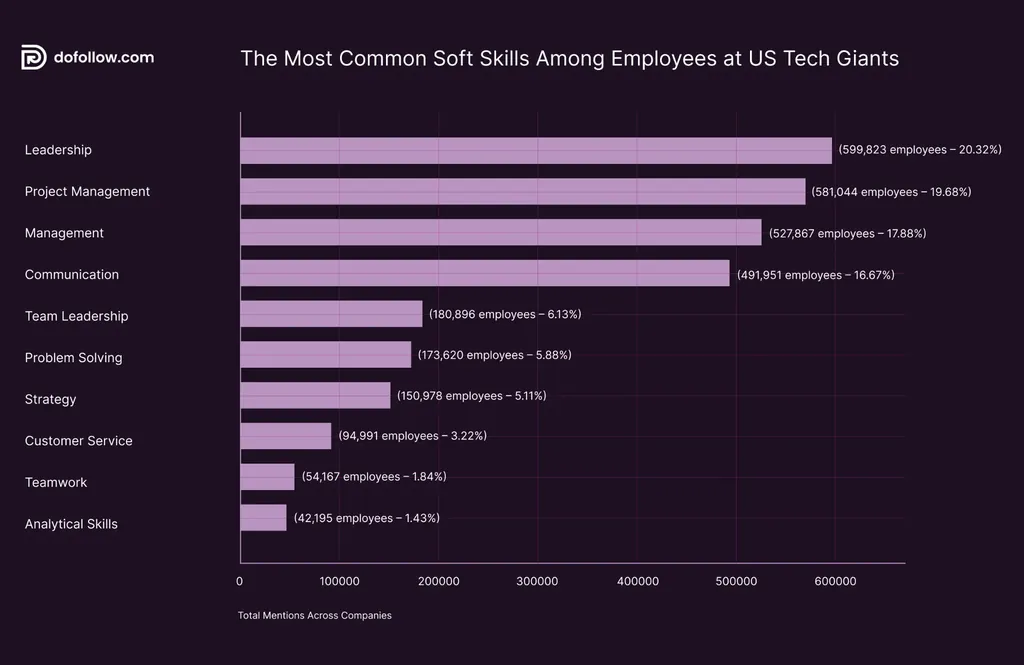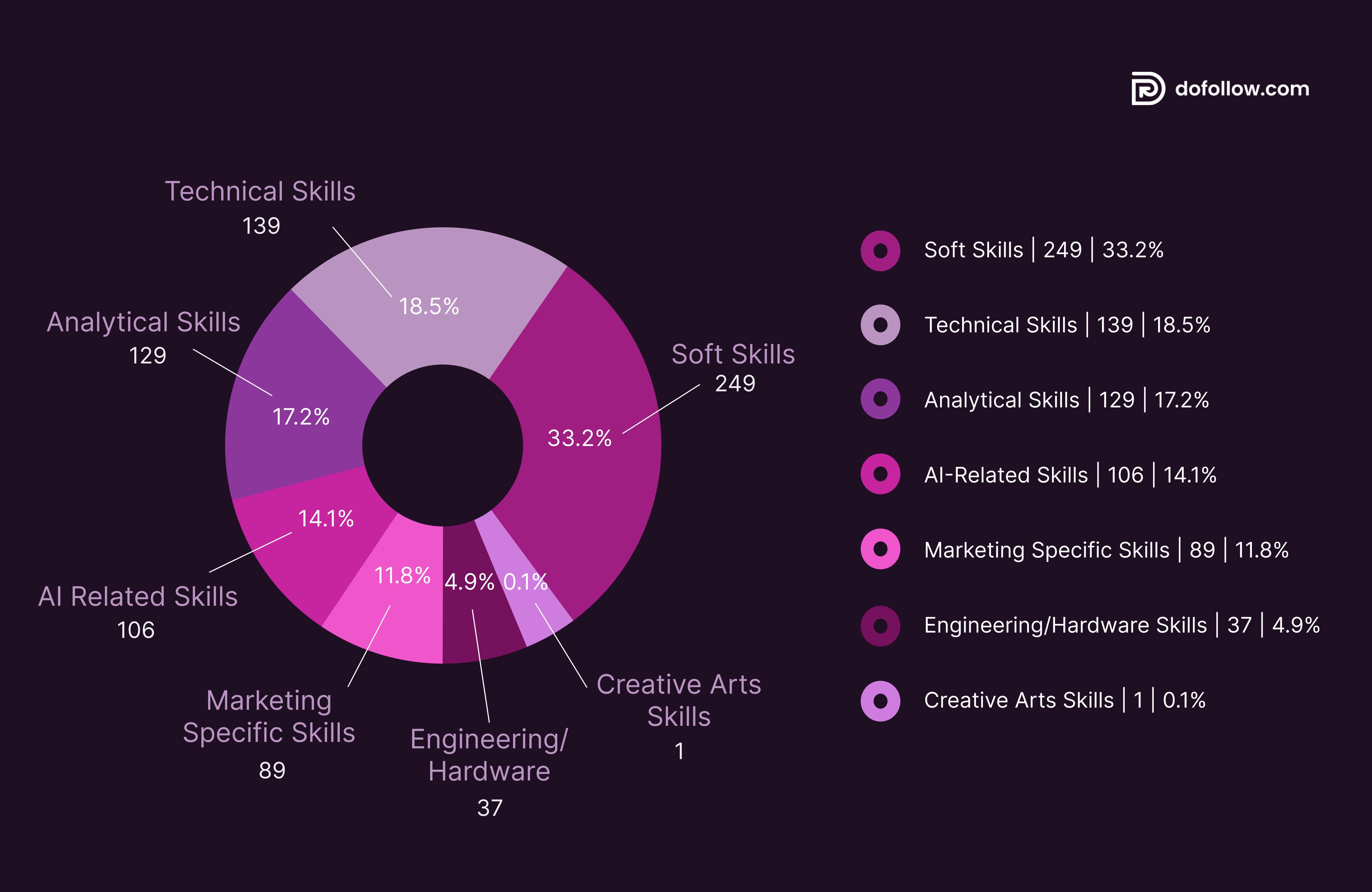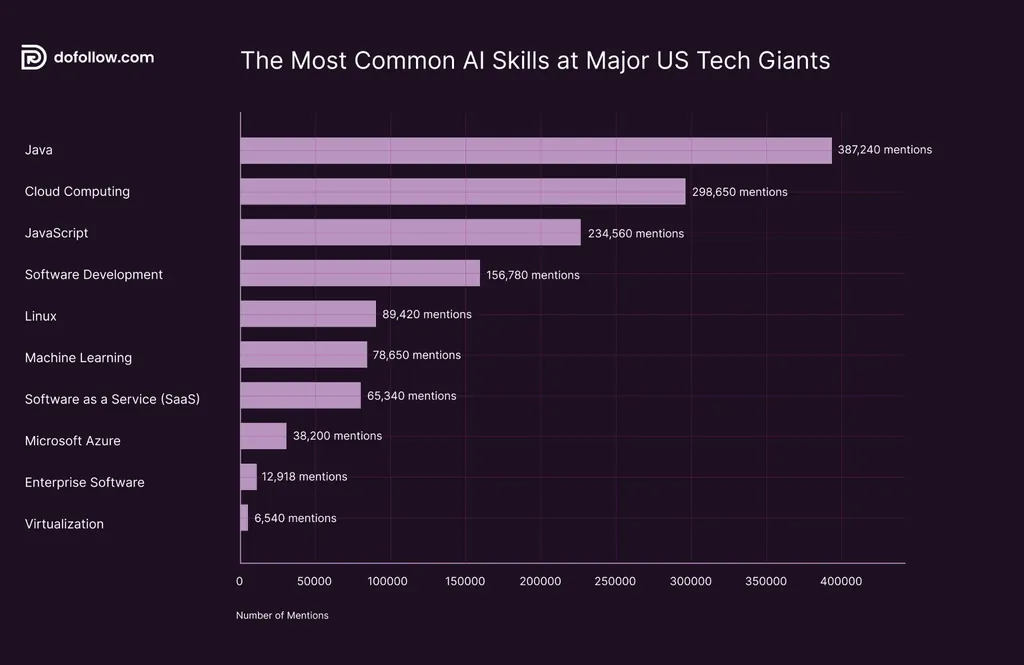Behind every shiny new AI tool is a human skill no algorithm can imitate.
Fresh analysis of employee profiles at top US tech giants reveals an unexpected twist: Leadership shows up nearly 600,000 times. This makes it the most common skill in a world built on code, ahead of project management and machine learning.
“AI will push us into a new era,” says Aneesh Raman, Chief Economic Opportunity Officer at LinkedIn. “Companies won’t win just by having the best tech; they’ll win by having the best talent.”
If the numbers reveal anything, it’s that Big Tech’s real edge isn’t code. It’s people.
Soft Skills Take the Lead
Zoom in and the story sharpens: soft skills dominate the top ranks. Leadership appears on nearly 600,000 profiles, nudging out Project Management (581,000) and far ahead of Machine Learning (57,000). Communication alone shows up in almost half a million, more than Cloud Computing or JavaScript

When you look only at soft skills, the pattern holds. Companies invest heavily in leadership, project management, and communication. These are the glue that keeps teams aligned when AI takes over routine work.

The Big Reveal: Humans Still Matter
Zoom out, and something quietly powerful comes into focus.
Despite all the noise around AI, data, and code, it’s not technical brilliance that tops the list. It’s human skills: leadership, communication, collaboration. The kind of strengths you can’t automate or outsource.

In fact, soft skills alone make up over 33% of all employee skills across top US tech companies. That makes them the single biggest category in the mix.
“AI will handle more and more of what we once did alone at a desk,” Raman says. He believes what remains is the work only humans can do: working with other humans.
Inside the AI Boom
Even inside AI-specific roles, the hierarchy flips expectations. Foundational programming languages like Java and JavaScript still outrank Machine Learning specialization.

So while AI writes more code, humans stay in charge of the blueprint.
Company DNA in Skills
The data also reveals each company’s unique fingerprint. Tesla under-indexes on everyday business skills like Microsoft Office but leans heavily into engineering depth. It’s the same story for Apple, which sticks to proprietary know-how over broad technical fluff.
.webp)
.webp)
Python pops up as the top unique skill at companies like NVIDIA and Google, while Microsoft Office still leads at consumer-facing giants like Amazon and Netflix.
_resized.webp)
The Risk for Everyone Else
If Big Tech is already doubling down on leadership and connection, where does that leave everyone else?
“Without a skills-first mindset, you’re flying blind,” Raman warns. LinkedIn’s forecast is blunt: by 2030, 70% of today’s job skills will have changed. Companies still hiring for degrees instead of capabilities may find the best talent passing them by, or worse, stuck in yesterday’s tasks while AI reshapes the work they never saw coming.
AI will keep writing the code. But as tasks shift from code to connection, the companies that invest in human-centered leaders will shape what comes next.
Methodology
This analysis examined the skill profiles of employees at America's largest technology companies to understand workforce composition and strategic talent priorities.
Company Selection
Using data from Companies Market Cap, we identified the 100 highest-revenue US companies within the technology sector. 50 of these companies formed the basis of our analysis, focusing on those with live LinkedIn pages.
LinkedIn Data Collection
For each of the selected companies, we analyzed their LinkedIn People pages to extract:
- Total number of employees
- The top most commonly listed skills
- The number of employees listing each of the skills
Skills were categorized into overall skills, soft skills, AI-related skills, based on their nature and application. The "most uniquely popular skill" for each company represents the skill where that company's employees most significantly over-index compared to the overall industry average across all 50 companies analyzed.
Data Sources
- Company profiles: https://companiesmarketcap.com/tech/largest-tech-companies-by-market-cap/
- Employee count: LinkedIn
- Skills data: LinkedIn
Additional Research
The LinkedIn workforce insights referenced in this analysis come from Aneesh Raman, VP and Head of the Opportunity Project at LinkedIn, from his research “Reimagining Skills in the Age of AI.”
All data reflects publicly available LinkedIn profile information and company listings as of the analysis date.
